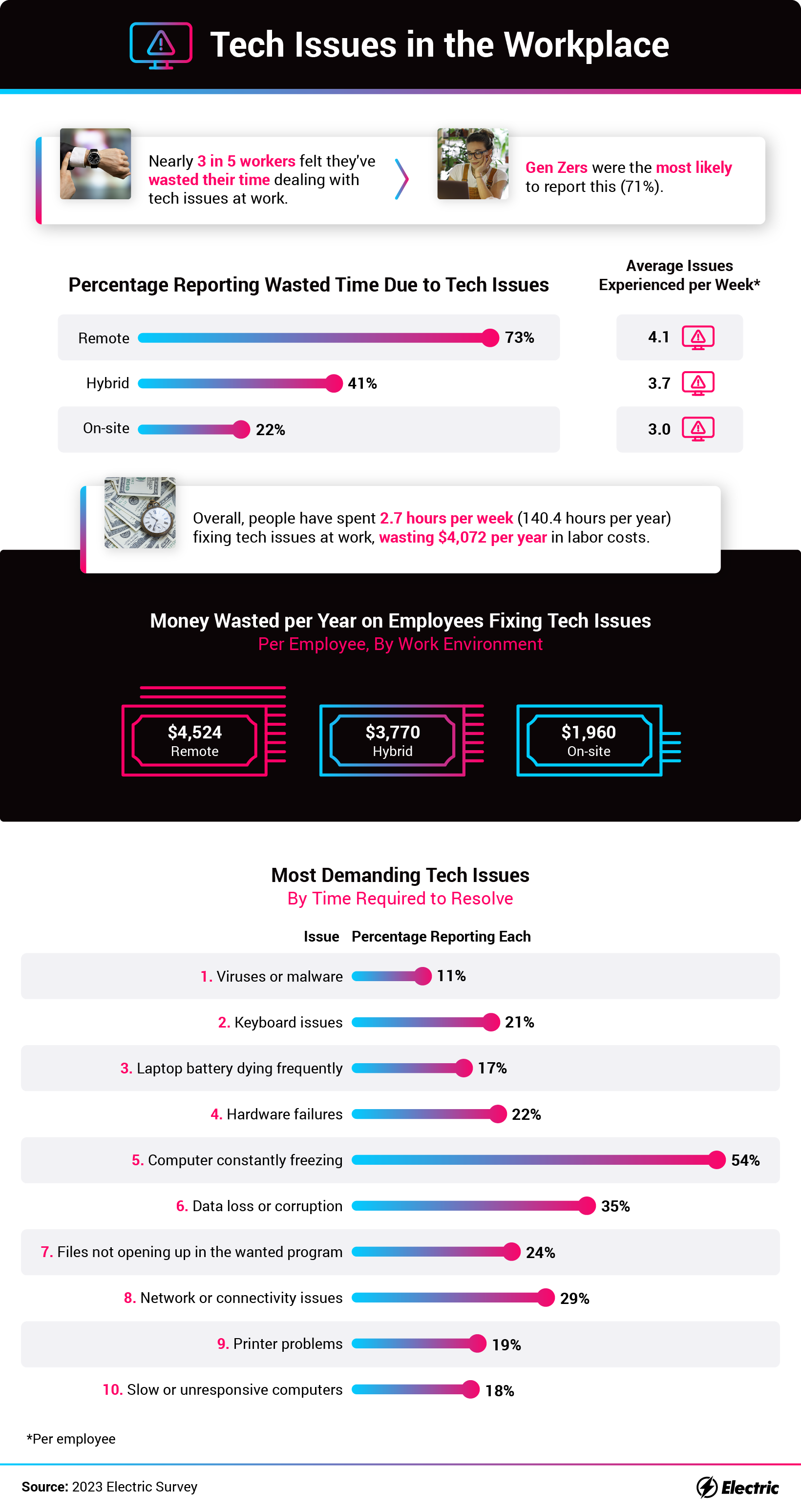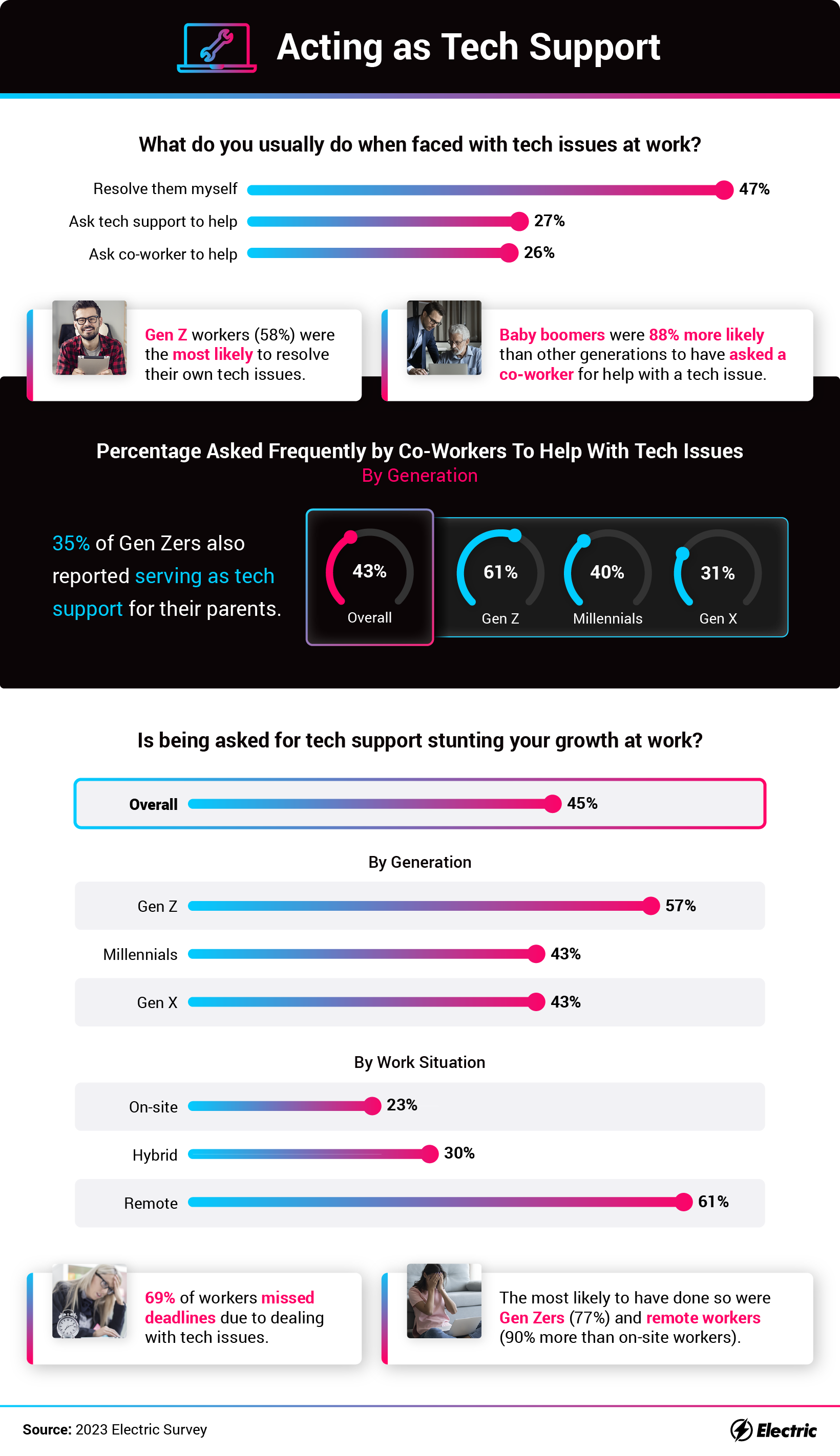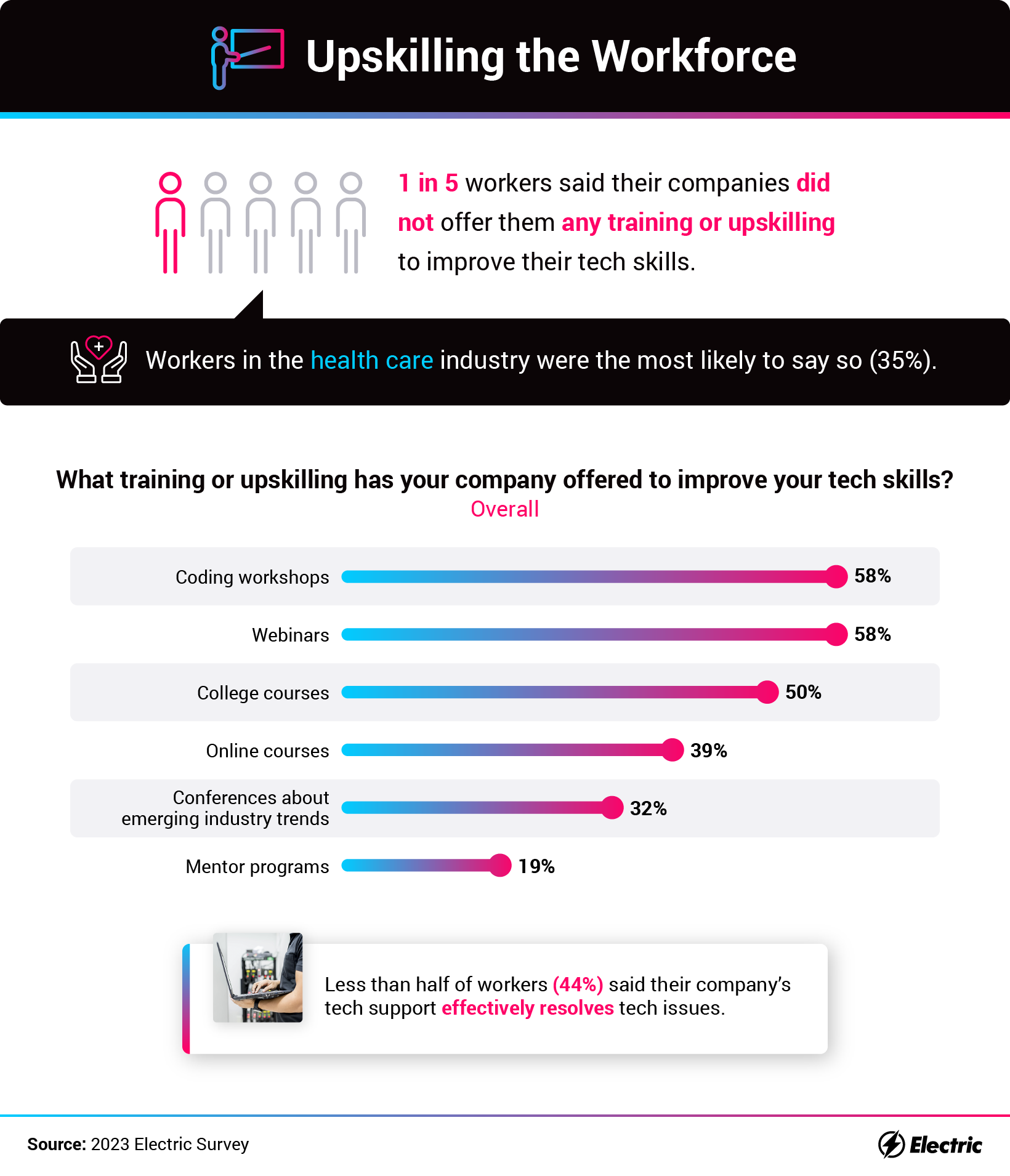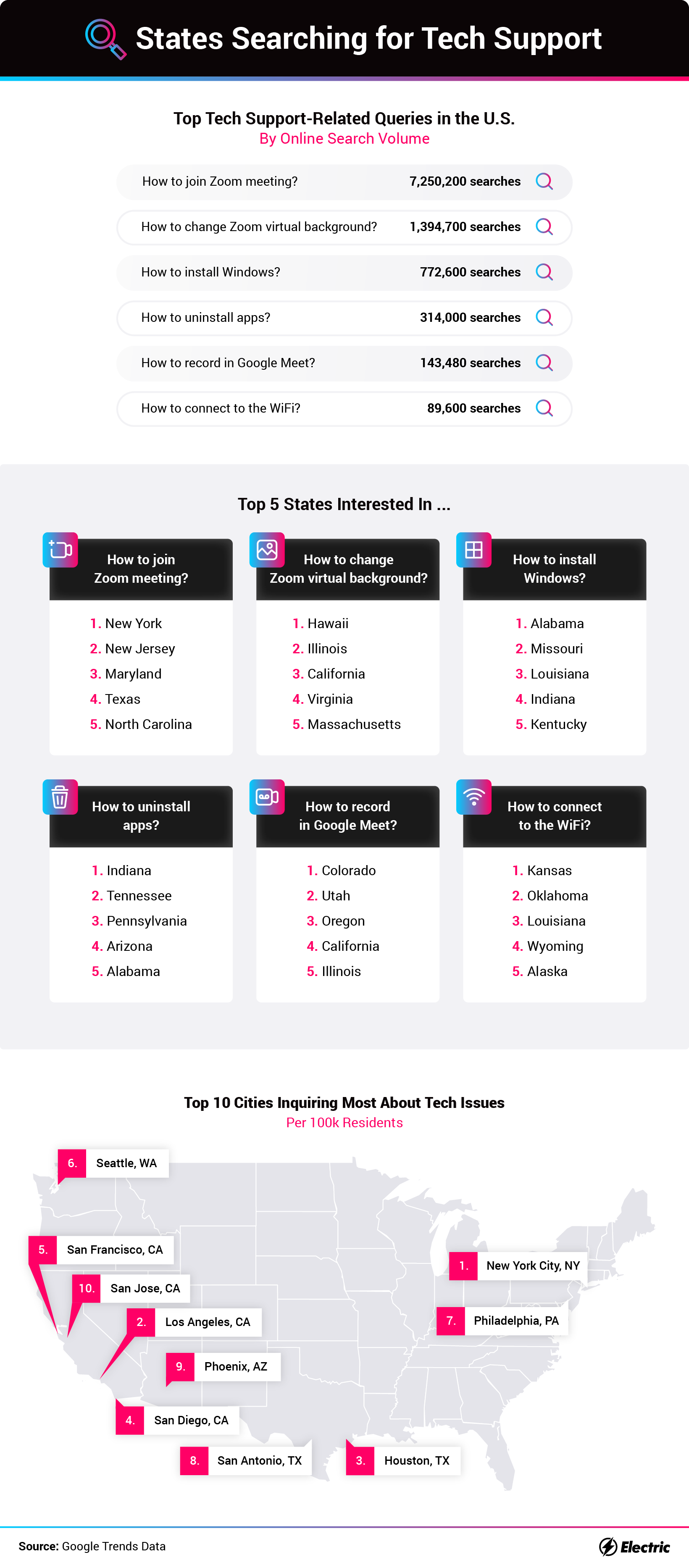Every Year, Employers Waste $4,072 Per Employee Due to Tech Issues
Key Takeaways
- Nearly 3 in 5 Gen Z workers feel that constantly being asked for tech support by co-workers stunts their growth at work.
- Workers spend an average of almost 3 hours a week dealing with tech issues.
- Remote workers (73%) waste more time due to tech issues than on-site (22%) and hybrid workers (41%).
- Baby boomers are 88% more likely than other generations to ask their co-workers for help with a tech issue.
On good days, many of us use technology to do our jobs without hardly even thinking about it. But on days when our computer freezes or connections keep dropping, we often feel frustrated about these issues, and the time we waste on them. A recent Electric study also found that frequent tech problems cost employers thousands of dollars per year per employee. How might tech issues be affecting your employees and company? What can be done to fix it? Read on to find out.
Dealing With Tech Issues at Work
Some of the most costly tech issues are the ones we encounter most often. Let’s see exactly how much time and money are being wasted on fixing these problems at work.

Tech issues can eat up a surprising amount of time in your workweek. On average, we found workers spent nearly three hours per week (more than 140 hours per year!) fixing tech issues. Taking into account the average hourly wage ($29/hour) and number of weeks per year (52), that’s an average annual waste of $4,072 per year in labor costs per employee.
Remote workers reported struggling the most: 73% said tech issues had wasted their time, compared to 41% of hybrid and 22% of on-site employees. Remote workers also said they’ve run into an average of more than four tech issues per week.
Yet for anyone who’s recently used an office printer, it’s not too shocking to discover that employees wasted the most time at work on equipment problems. In fact, 55% of workers said their company’s tech was antiquated. This might account for why workers’ most common tech problem was a frozen computer. Data loss or corruption issues and network and connectivity issues also topped the list.
Poor quality tech, including hardware and software, are a significant drain on businesses whose employees struggle with these issues. Next, we’ll look at how employees usually deal with tech issues and if it’s affecting their productivity and growth.
IT Issues Ruining Productivity
If your colleague has an issue with their laptop that you can fix, you’ll likely try and help when they ask you to. But what impact might this have on your work?

Many of our respondents dealt with interrupted productivity, missed deadlines, and stunted growth because co-workers frequently asked them to perform IT services. Almost half also said they usually try to fix problems themselves before seeking IT support.
Gen Zers were the most likely to resolve their own tech issues, while baby boomers were 88% more likely to ask a co-worker for help. Gen Zers were also most often tapped for IT support (61%), followed by millennials (40%), which makes sense as these younger generations grew up surrounded by technology.
Another problem eating up workers’ time could be a lack of proximity to their company’s IT support services. As 61% of remote workers said being frequently asked for tech support was stunting their growth, compared with just 23% of on-site employees. If people are working in the same office, they can quickly have an issue resolved in person by IT support. That isn’t the same if someone’s working in a different city or state and your company’s IT services aren’t set up to manage a hybrid or remote team.
Ways To Upskill the Workforce
One way to fight back against time-wasting tech is by upskilling the workforce. Are companies providing employees with the information they need to work more efficiently?

While some companies provide training or upskilling, one in five workers surveyed said their employers didn’t. Upskilling can increase productivity and help plug skills gaps within organizations. Among our respondents, coding workshops and tech webinars were the most common training offered, followed by college classes.
Our survey also revealed that there’s room for improvement when it comes to existing tech support teams. Less than half of respondents said their company’s IT support had effectively resolved their technical issues.
Most Commonly Searched Tech Issues
Tech issues are a universal problem no matter where you live and work. Yet some states need more tech support help than others.

To see who was most in need of IT help, we analyzed Google search volumes for different tech problems. Over seven million Americans needed help learning how to join a Zoom meeting, reflecting that many people are still working a hybrid or remote job in a post-pandemic world. The next most popular tech search was “how to change a Zoom virtual background,” with over 1 million searches.
We also reviewed search data from 50 of the most populated U.S. cities and determined that residents in New York City, Los Angeles, and Houston made the most inquiries about tech issues. These findings make sense given the business mecca that is the Big Apple, the tech giants that make their homes in California (or are the ones leaving for Texas). We also collected search volume for all 50 states, finding that New Yorkers and Texans most often needed help with “how to join a Zoom meeting.” However, Californians were more concerned about changing their Zoom backgrounds and recording in Google Meets.
The Present and Future of IT Solutions
Tech issues, and the time it takes to fix them, are eating into employees’ time and productivity and costing companies thousands of dollars every year. Offering technical training and upskilling opportunities could help resolve basic tech issues and get people back to work faster. But investing in new tech and IT solutions is likely the best way to go for those looking to set their team up for success.
Methodology
For this campaign, we surveyed 1,049 employed Americans. Among them, 56% were men, and 43% were women. The generational breakdown was as follows: 15% Gen Z, 58% millennials, 17% Gen X, and 10% baby boomers. We also used 2022 Google Trends data to analyze search volume data for different tech issues queries across all 50 states and the 50 most populous cities in the U.S.
About Electric
Electric helps you manage your people, devices, networks, and apps all in one place. Get on with your day, and leave IT support to Electric.
Fair Use Statement
Readers can share these findings for any noncommercial purposes, but please provide a link back to this page in doing so.










